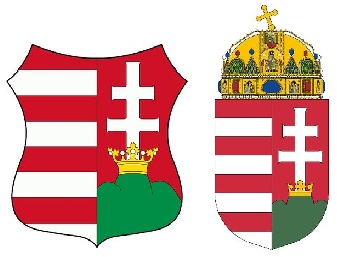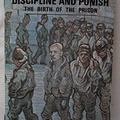Proverbs are a wonderful treasure. Yet, what are they? The wisdom of people? The common literature of people? Something witty? Or a hidden message indestructible through time. People often believe that a proverb is not meant to be interpreted literally. That was the case with Homer's Iliad, too, which was considered only as a tale or myth. Then, Schliemann took the ancient Greek epic poem seriously and interpreted it literally. What happened thereafter was that he found the legendary Troy. That is to say, literature is not only fantasy, but also something more. Troy could be destroyed and forgotten, but its legend was immortal. There was also that Hungarian 'óperencia' from tales, which referred to the area above the Enns River (German ober der Enns), ever since that river was once the Hungarian border.
Click here to read this article in German (Deutsch)
Click here to read this article in Hungarian (magyar változat)
First, let us have a look at Hungary. Like other nations, the Hungarians are fond of conspiracy theories. Yet, what if we all had one in our language? In this case it can be argued that 'Hungarian proverbs or our language say so; everyone knows that'.
Let us play with the idea of perceiving our proverbs literally. For instance, one might take an average Hungarian man who lives in the countryside. He would like to go to Budapest. However, what does he say? He says, "I'm going to Pest". That is, Budapest is Pest. It would sound bad, or a bit comic, perhaps too official, to say 'Budapest'. The name Budapest can be found in a Hungarian proverb from 1851:
"Jár a bolond Budapesten, azt sem tudja, hány az isten."
In this proverb a lunatic is in Budapest, but not in Pest. Perhaps it would mean something crazy to say 'Budapest'.
Then, the Hungarian man gets off the train at Déli Railway Station. On the Buda side of the city he says, "I'm already in Pest". That is, Buda is Pest, too. Our Hungarian friend has to arrange something in Pesthidegkút. That can be found on the Buda side, too. Finally, he wants to see something that is ultimately 'Buda'; therefore, he goes in the Buda Castle. In the museum there he learns that many Germans lived in Buda, who called Buda 'Ofen'.
Exactly! On the website mittelalter-lexikon.de the following information can be found. Ofen received its name "after former kilns for brick and lime burning, which functioned here". Their name is 'pest' in Slavic languages and 'Ofen' in German; i.e., Ofen literally means Pest, but not Buda. It seems that neither the Hungarians nor the Germans would like to say Buda. What is it called in Latin then? According to the website, the Castle Hill is called Novus Mons Pestiensis; which literally means 'the New Mountain of Pest', where King Béla IV founded the castle.
What does that all mean? What has happened to Buda? It seems that Buda has been lost in a literal sense! The Hungarians can say the following proverb for such situations:
"Oda Buda."
In this proverb Buda is literally lost. This proverb is said to be an allusion for the fall of Buda to the Turks. Nevertheless, it has another meaning, too: "Buda is there / in that way". There are also similar versions: "Nem oda Buda," and, "Nem arra Buda (1820)”. These versions tell us about that someone is heading not in the right direction of Buda, or Buda is not situated there.
In János Arany's literary work Toldi, the peasant Toldi showed the royal soldiers the way to Buda. Besides, another proverb puts an emphasis on the position of Buda:
"Itt van Buda, itt hegedülj!" (1820)
In English: "Here is Buda (not there), play the violin here!" It seems that people would not like to say 'Buda', nor do they find where it is.
Whatever, where does the name 'Buda' stem from? Based on the legend, Buda (or Bleda), who was the brother of Attila, named the city after himself. Therefore, Attila, king of the Huns, got angry with him and killed him. It is quite interesting that the Germans called the city of Attila, i.e. Buda, even in the Nibelungenlied 'Etzelburg'; meanwhile, they used both Ofen and Etzelburg to name the city at the same time. For instance, Queen Barbara of Cilli, the spouse of Sigismund of Luxembourg, whose royal seat had been in Buda since 1408, wrote the following in German in her letter to the mayor of Vienna on 13 March 1425:
"das wir zugriffen und angefangen haben unser geslosser alhie ze Ungern und nemlich unsern Sitz ze Eczelburg fursich zepawen". [1]
["that we have taken hold of and have quickly begun to build up our castles in Hungary, and particularly our seat at Etzelburg"]
It seems that the royal seat Buda was called not Ofen, but Etzelburg. It is well-known where Ofen was situated: that is Pest today. Then, where was Etzelburg situated? In the German article "Nibelungen in der Wachau: Spurensuche einer sagenhaften Reise" (reise-zikaden.de) it was attempted to reconstruct the mythical spots of the Nibelungenlied. According to the article, Etzelburg was situated in 'Gran' (that is Esztergom today). At first glance, it is beyond all probability. Although, a proverb reinforces this statement, one which I found and could interpret. It has several versions:
"Budát-Pesttől csak a Duna választja el, mégis hatvanhat mérföld." (1823)
"Buda and Pest are separated only by the Danube, still it is 66 miles."
The Hungarians do not understand this proverb; therefore, the following additional explanation is provided in books: this proverb is a play on words. Namely, it means that the Hungarian town Hatvan is situated 6 (or 60 / 66) miles from Budapest. Based on books, this proverb can be only playful, but by no means literally interpreted, as "it is impossible".
The explanation is yet questionable. It is based upon the misconception that the Hungarian town Hatvan, whose name means 'sixty', was named after its distance from Budapest, which is thought to be 60 miles. Yet the fact is as follows. There cannot be 60 miles by any measures, as the blog hatvantortenete.blog.hu discusses it in its post titled "Az a bizonyos 60 km..." ("Those particular 60 km...") arguing that Hatvan and those 60 miles are only a popular urban myth, regardless of how many metres a mile meant.
As it is mentioned above, there are other versions of the proverb, too:
"Buda és Pest között csak a Duna foly, mégis Buda Pesthez hatvanhat mérföld."
"Pest, Buda közt csak a' Duna foly, mégis hatvanhat mérföld."
It is irrelevant whether 'Hatvan' here is spelled separately or not since proverbs have originated in oral tradition.
Let us finally consider the insane idea of interpreting this proverb literally. What it means is that Buda is (or was) situated 66 miles from Pest, but on the other bank of the Danube. It is known that Pest is equivalent to modern Budapest, which was once Ofen, too, but that was not Buda...
Near milepost 61 (depending on the kind of mile meant in the proverb), north of Budapest, on the right bank of the Danube, there is a rather strange mountain called Szamár-hegy. It also has a German name: Eselsberg (based on Wikipedia and old German maps of Hungary). Eselsberg is situated in front of the mountain Burda and near the centre of Esztergom (Gran). Szamárhegy is the administrative part of Esztergom. According to the conspiracy theory, Eselsberg was called Etzelberg long ago. Eselsberg is situated exactly in the place (in the administrative area of Esztergom) where the location of Etzelburg was presumed to be according to the German website. Finally, what does the mountain look like? [See Figure 1]

Figure 1 (allevents.in)
Interestingly, it is a mountain seen by every Hungarian at least once in their lives: [See Figure 2]

Figure 2
The coat of arms of Hungary has preserved a mountain from the 15th century, which has a crown on its middle mountaintop. The crown is the symbol of the royal seat, which was Buda. Where is the castle then? There is only a heap of stones, which looks like as if it were ruins, on the middle mountaintop of Eselsberg. The Hungarians can say the following for such phenomena:
Castle stood, now a heap of stones
Happiness and joy fluttered,
Groans of death, weeping
Now sound in their place.
(The national anthem of Hungary / Translation: Wikipedia)
Even the "weeping" can be found next to Eselsberg today: there is the place called Búbánatvölgy, which translates "Valley of sorrow".
What does that all mean? Is there a great mystery? Or is everything only a conspiracy theory? Well, our language and folk tales say:
"Aki nem hiszi, járjon utána!"
"If you do not believe it, go and see for yourself."
References:
[1] Whelan, Mark. Sigismund of Luxemburg and the Imperial Response to the Ottoman Turkish Threat, c. 1410-1437. Thesis. Royal Holloway: University of London. 2014. Retrieved <https://core.ac.uk/download/pdf/28905950.pdf>.
https://www.mittelalter-lexikon.de/wiki/Ofen
https://www.arcanum.hu/hu/online-kiadvanyok/Szolasok-regi-magyar-szolasok-es-kozmondasok-1/dr-margalits-ede-magyar-kozmondasok-es-kozmondasszeru-szolasok-5222/buda-552A/
https://www.arcanum.hu/hu/online-kiadvanyok/Lexikonok-a-pallas-nagy-lexikona-2/e-e-7C62/etzelburg-8E1D/
https://reise-zikaden.de/nibelungen-in-der-wachau-donau-kriemhild-spurensuche/
https://hatvantortenete.blog.hu/2012/02/02/az_a_bizonyos_60_km
https://de.wikipedia.org/wiki/Burgus_Esztergom-Szentgy%C3%B6rgymez%C5%91_1#cite_note-Soproni_1978_25-19






